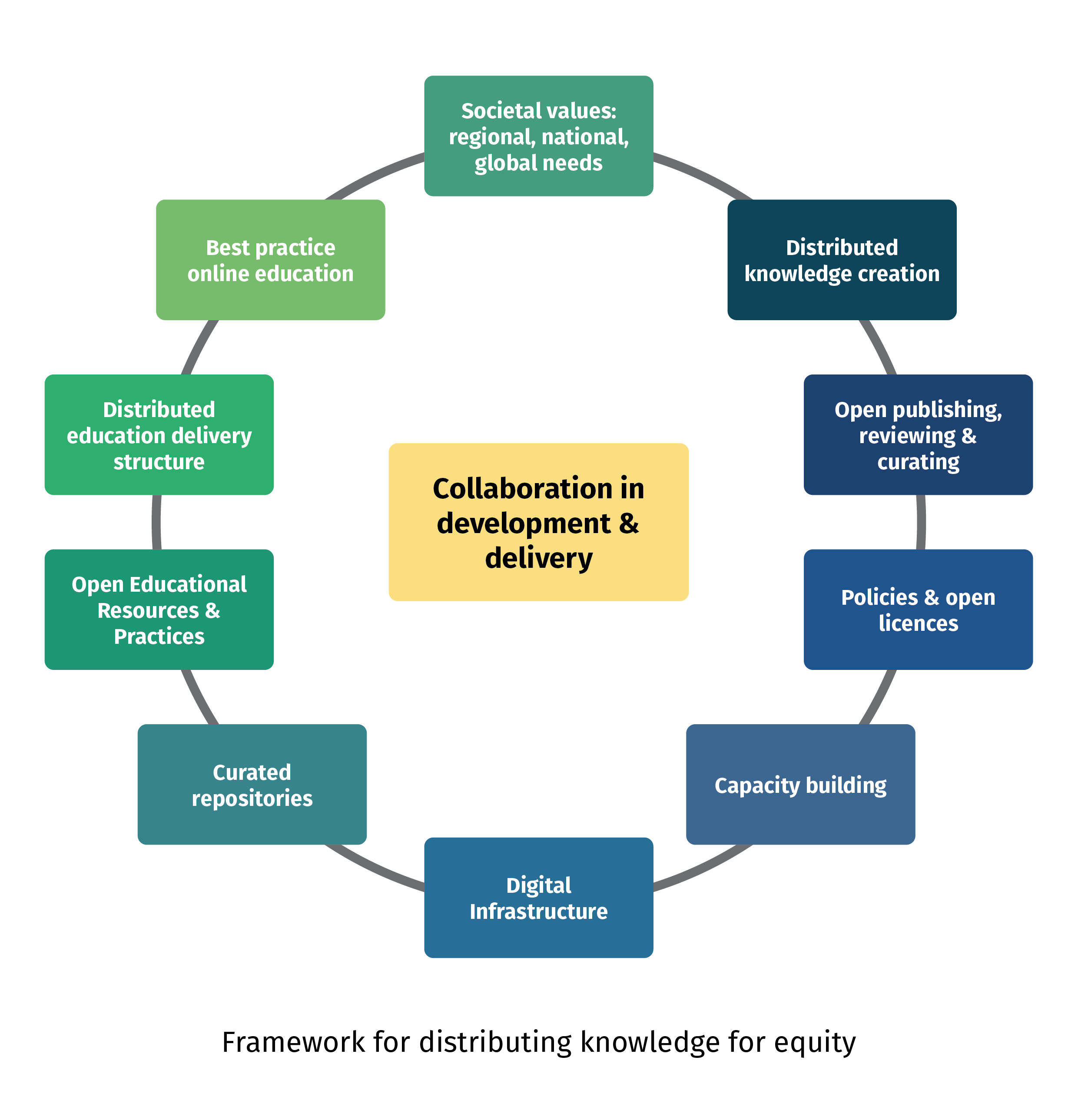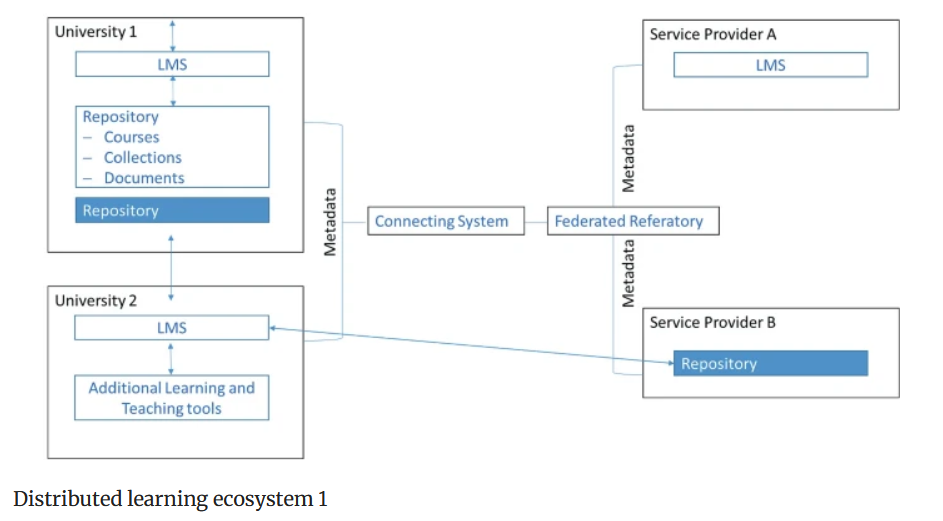Section 7. Practical aspects of implementing the distribution of education and knowledge creation
Section outline
-
By the end of this section of the course you should be able to:
Develop strategies to advocate for the adoption of distributed and networked learning approaches within your own educational institution.
Reflect on your own learning and development throughout the course, whether there are further areas to cover and whether the course would be suitable for others.
Conduct self-assessment and peer-assessment to improve teaching practices related to distributed and networked learning.
Discuss the practical aspects of implementing distributed education and knowledge creation within your own institution and more broadly
Having discussed the requirements and design for a distributed approach to education and knowledge creation, we need to consider the environment that will enable this to work in practice. The elements of this will include
Capacity building among academic, administrative and design staff – we hope that this course will help meet this need
Collaboration within and between educational institutions as well as with community and industry partners
Peer support within institutions and communities of practice to share best practice
Infrastructure within and between institutions, including learning management systems and repositories
Development of policy frameworks within and beyond institutions, including by research funders
Development of strategies within institutions for the selection of courses, award levels and students
We have canvassed many of these issues in the various sections of the course, so maybe as a reader of the course you can answer these questions for yourself?
Beforehand, let’s recap through two of the diagrams which we have seen previously in the course. The framework for distributing knowledge for equity is more broad, and attempts to capture each of the issues we have covered in the course. The distributed learning ecosystem relates to the digital infrastructure and the technical requirements for collaboration to distribute education between universities and service providers. Between them, these diagrams indicate many of the issues to consider as we attempt to implement the distribution of education and knowledge management to reduce inequity.

This image first appeared in Distributing knowledge creation to include under-represented populations in The International Review of Research in Open and Distributed Learning (in press).

The distributed learning ecosystem, from Otto and Kerres
Transition to a more distributed environment will require policies to encourage and support change. These can be at the government or institution level. An example in Australia, but now 10 years old, was the Feasibility Protocol to support the use of Open Educational Resources and Practices. The Feasibility Protocol addresses four aspects, as identified in this OpenBook chapter:
- Opportunities that open education could bring to institutions and broader society;
- Challenges associated with the adoption of open education;
- Strategic Directions for an effective adoption of open education; and
- Policy Recommendations for higher education institutions in Australia
As we reflect on the policy challenges, and on the content in this section, and indeed all sections, of the course, we suggest that it would be helpful for participants to ask, and answer these questions:
Are you ready for the implementation of distributed education and knowledge creation? What strategies or policy frameworks will you require to encourage the distributed approach, within your department, institution and broader discipline? Are you aware of any that exist currently?
How will you develop the capacity for distributing education and/or knowledge creation for yourself or for your organisation? Will you be able to use this course? If so, would the use be in a formal Continuing Professional Development (CPD) programme, for an academic award, or for self-enrolment by anyone? Would it be offered within your own educational institution such as to new academics or learning designers, or for external students? If not, are there other courses or resources that would be useful?
Focusing on one discipline or content area, which collaborations would be useful to you in the development of the ability to offer both education and knowledge creation in a distributed fashion?
Educational technology support: Do you have adequate technologic expertise in your institution to support the delivery and adaptation of the course?
What broad ecosystem of distributed learning might be relevant for you? Are there potential or existing partner organisations for sharing resources, infrastructure, learning management systems and repositories?
Do you support the concept of Open Educational Resources (OER) and are you prepared to use OER yourselves as well as offer your educational materials as OER for others to use?
Might you be able to identify opportunities, and funding, for members of diverse populations to contribute to knowledge creation through research?
Would you be prepared to join, or lead, communities of practice to exchange best practice, provide peer review and peer support as well as advocate for distributed education and knowledge creation?
How will you evaluate whether your activities in this field are ethical and are reducing inequity in access to higher education?
-
Please reflect on how you would answer at least one of the questions posed at the end of this section of the course.
